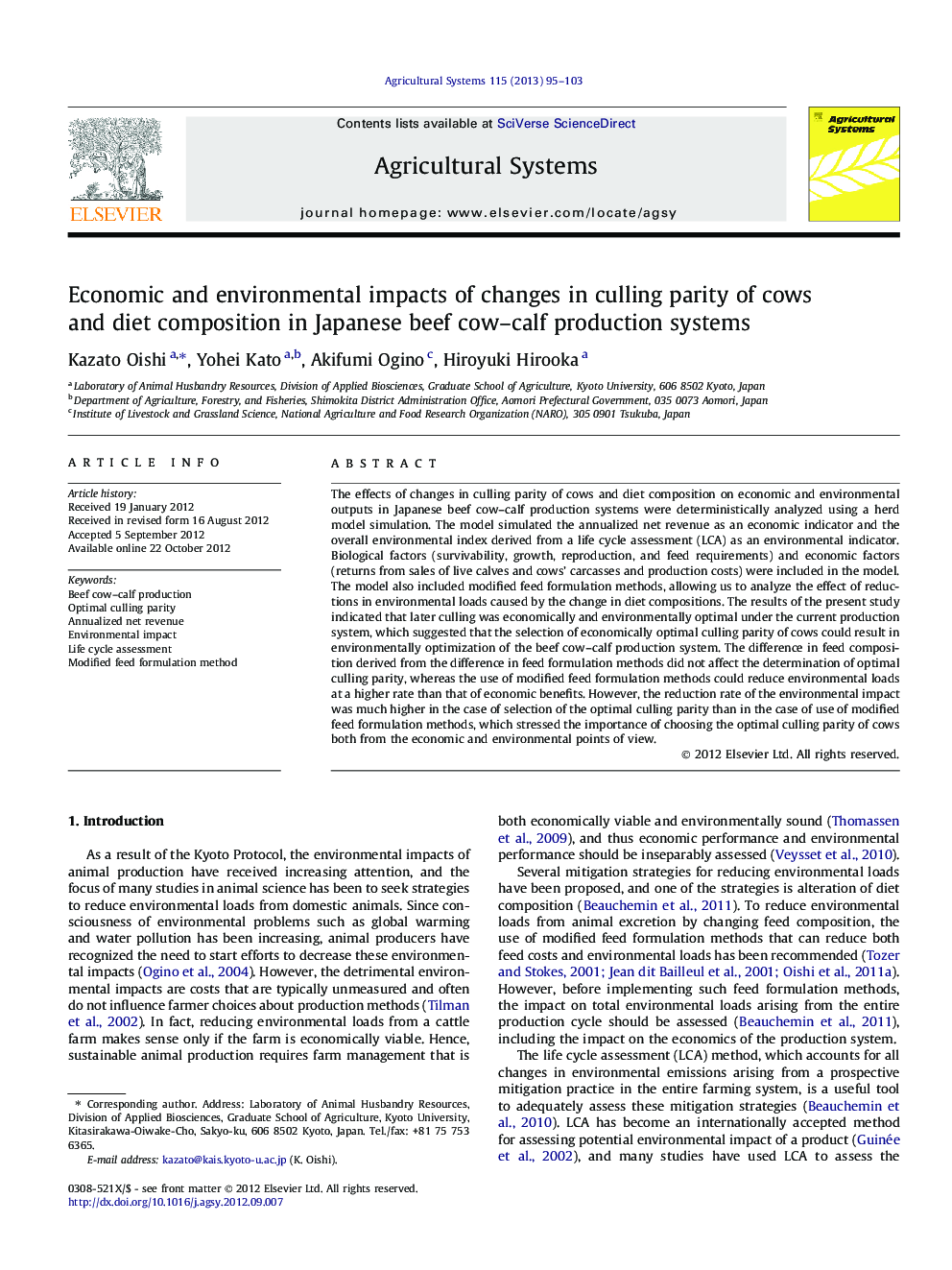| Article ID | Journal | Published Year | Pages | File Type |
|---|---|---|---|---|
| 4491377 | Agricultural Systems | 2013 | 9 Pages |
The effects of changes in culling parity of cows and diet composition on economic and environmental outputs in Japanese beef cow–calf production systems were deterministically analyzed using a herd model simulation. The model simulated the annualized net revenue as an economic indicator and the overall environmental index derived from a life cycle assessment (LCA) as an environmental indicator. Biological factors (survivability, growth, reproduction, and feed requirements) and economic factors (returns from sales of live calves and cows’ carcasses and production costs) were included in the model. The model also included modified feed formulation methods, allowing us to analyze the effect of reductions in environmental loads caused by the change in diet compositions. The results of the present study indicated that later culling was economically and environmentally optimal under the current production system, which suggested that the selection of economically optimal culling parity of cows could result in environmentally optimization of the beef cow–calf production system. The difference in feed composition derived from the difference in feed formulation methods did not affect the determination of optimal culling parity, whereas the use of modified feed formulation methods could reduce environmental loads at a higher rate than that of economic benefits. However, the reduction rate of the environmental impact was much higher in the case of selection of the optimal culling parity than in the case of use of modified feed formulation methods, which stressed the importance of choosing the optimal culling parity of cows both from the economic and environmental points of view.
► Economic and environmental evaluations were carried out for beef cow–calf herds. ► Model included modified feed formulation methods to reduce environmental loads. ► Economically optimal culling of cows could be environmentally valuable. ► Culling strategy is more environmentally effective than the feed formulation methods.
